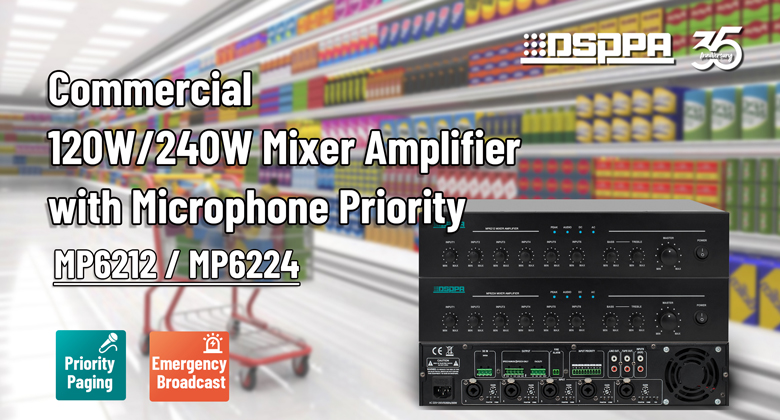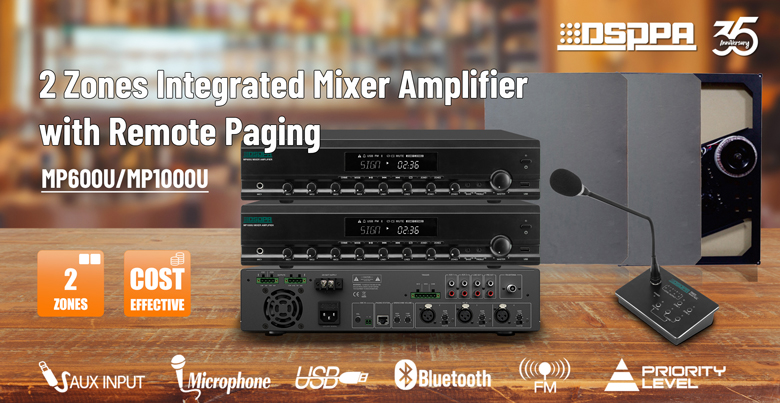

Chat now

PA Amplifier is an electronic device used to increase signal power, widely used in audio equipment, wireless communication, television broadcasting, and other occasions that require driving loads. Its main function is to amplify a weak input signal to a sufficient output power while maintaining the signal waveform, to drive speakers, antennas, or other loads.

PA Amplifiers usually have high voltage gain and current gain, capable of amplifying the input signal to a larger output power. In design, linearity is an important factor that determines the distortion level of the amplified signal. High linearity amplifiers can retain more original signal characteristics, making the output signal more accurate.
The efficiency of a PA amplifier is an important indicator of its performance. High-efficiency amplifiers can output relatively high power while consuming less power. This is especially important for mobile devices and portable audio equipment, as they are usually limited by battery capacity.

Since PA Amplifiers generate a lot of heat during operation, good thermal management design is crucial. Effective cooling measures can ensure that the amplifier works normally under high loads and prevent damage to the device due to overheating.
To achieve optimal power transfer, the input impedance and output impedance of the PA amplifier need to match the preceding signal source and the following load. Proper impedance matching can reduce signal reflection and distortion, ensuring effective power transmission.
In the case of high input signals, PA Amplifiers may enter a saturation state, causing severe distortion of the output signal. Therefore, the design needs to consider the anti-saturation capability to ensure stable operation under large signal conditions.

PA Amplifiers basic working principle is to convert a weak input signal into a powerful output signal. It usually consists of the following parts:
This part is mainly responsible for receiving the initial signal and amplifying it to a level suitable for subsequent stages. The input stage usually uses high-gain amplification circuits to ensure the quality of the signal.
The main task of the driver stage is to provide appropriate drive current for the output stage. It ensures operation under the required current and voltage conditions of the output stage to achieve higher power amplification.
The output stage is the core part of PA Amplifiers, responsible for further amplifying the signal and inputting it to the load. Usually, the design of the output stage needs to consider the selection of power transistors to meet the needs of high output power.
To optimize performance and reduce distortion, PA Amplifiers often set up negative feedback loops. These feedbacks can effectively improve linearity, reduce nonlinear distortion, thereby enhancing the sound quality and operational stability of the PA amplifier.
In summary, PA Amplifiers are very important electronic devices, characterized by high gain, high efficiency, and good linearity, widely used in various electronic products. Understanding their working principles and usage characteristics is crucial for developing and designing high-performance electronic devices.
 【DSPPA Demo】PAVA8000 EN54 Voice Evacuation SystemNovember 12, 2020Abstract: DSPPA PAVA8000 EN54 Voice Evacuation SystemToday, we are gonna show you a demo about our PAVA8000 EN54 Voice Evacuation System.PAVA8000EN54 Voice Evacuation System can not only support manua...view
【DSPPA Demo】PAVA8000 EN54 Voice Evacuation SystemNovember 12, 2020Abstract: DSPPA PAVA8000 EN54 Voice Evacuation SystemToday, we are gonna show you a demo about our PAVA8000 EN54 Voice Evacuation System.PAVA8000EN54 Voice Evacuation System can not only support manua...view The National Standard Approval Meeting held in BeijingJuly 19, 2019The National Standard Approval Meeting held in BeijingThe approval meeting of the National StandardTechnical standard of public address system engineeringis held in Beijing on July 16, 2019. Xue Chang...view
The National Standard Approval Meeting held in BeijingJuly 19, 2019The National Standard Approval Meeting held in BeijingThe approval meeting of the National StandardTechnical standard of public address system engineeringis held in Beijing on July 16, 2019. Xue Chang...view